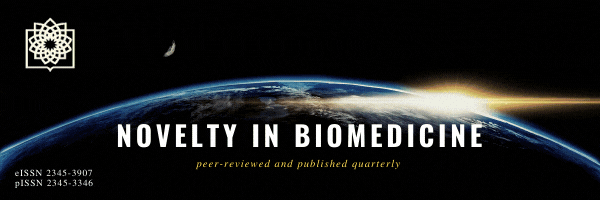Background: Multiple risk factors are supposed to progress oral cavity carcinoma and among them, the role of
neither bacterial nor viral infections should be underestimated. Despite relentless efforts, the accelerating effects
of human papillomavirus (HPV), Epstein–Barr virus (EBV), and Porphyromonas gingivalis (P. gingivalis) on
oral cancer has not yet been recognized successfully. Taking advantage of these facts, in this study we evaluated
the prevalence of HPV, EBV, and P. gingivalis in oral cavity carcinoma.
Materials and Methods: A total of 43 oral cavity cancerous tissues and 29 healthy oral ones were collected from
Loghman Hospital, Tehran, Iran, between 2016 and 2018. After DNA extraction, the prevalence of HPV, EBV,
and P. gingivalis was evaluated by PCR.
Results: There were 53.5 well-differentiated (15 male, 9 female), 41.8% moderate (10 male, 5 female), and
4.7% poor (1 male, 3 female) adenocarcinoma paraffin-embedded tissue samples. PCR analysis has shown
that there were 1 HPV (age: 46; moderate adenocarcinoma) and 1 EBV (age: 62; moderate adenocarcinoma)
positive in different samples. No P. gingivalis was found and there was not any infected tissue with both EBV
and HPV. In 31% of control tissues, blisters were observed and in 51.7% there was no mucus. We did not find
any association between age, sex, and HPV, EBV positive samples.
Conclusion: As sample size can affect the results of epidemiological and clinical study, and due to the low
number of positive samples in this study, we concluded that HPV, EBV, and P. gingivalis may not have a
detrimental effect on the progression of oral cancer, but further studies are needed.
